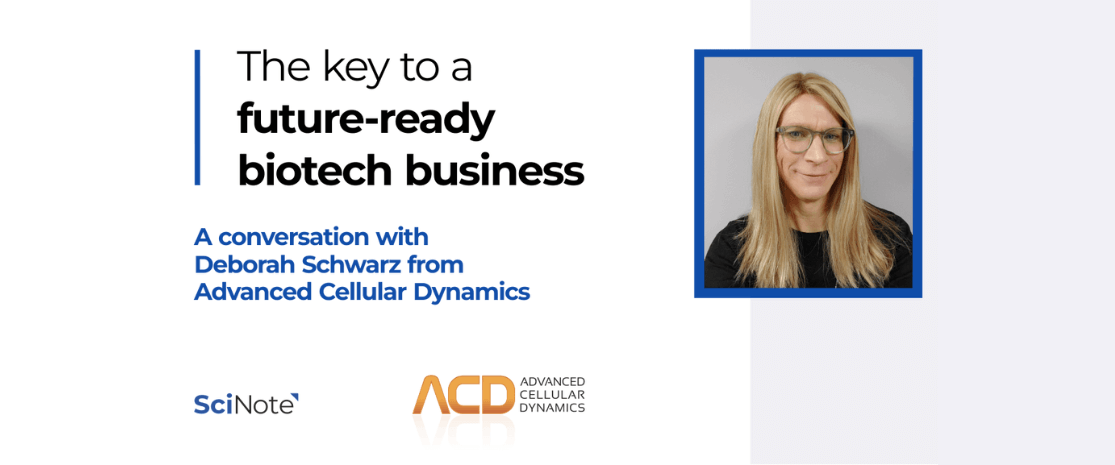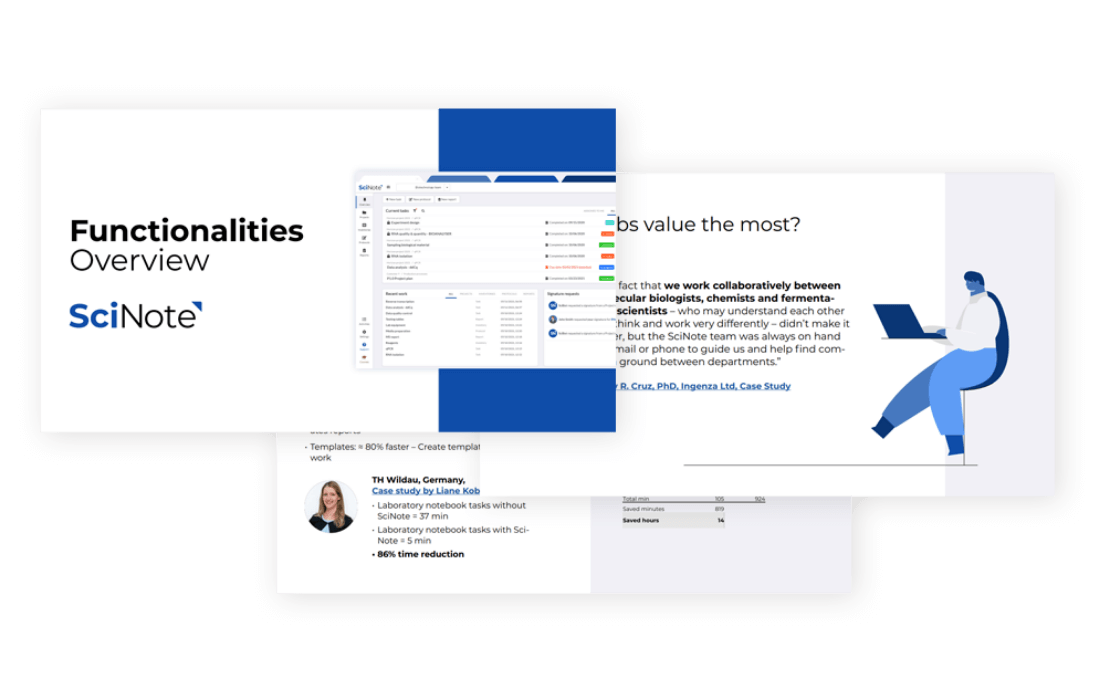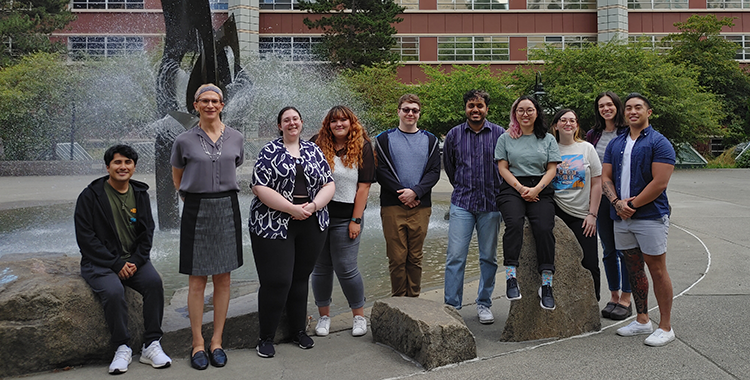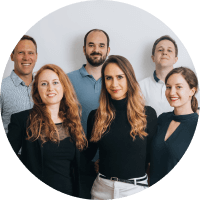Next generation sequencing & digitalization key to a future-ready biotech business
![]() 7 min read
7 min read
A conversation with Advanced Cellular Dynamics President and Chief Scientific Officer Deborah Schwarz on the curiosity for science, next generation sequencing, and readying the business for the future.
Preparing your biotech business for the future
For Deborah Schwarz, President and Chief Scientific Officer of the Seattle-based Advanced Cellular Dynamics, the key is to stay excited and challenged by the science you do, and to adopt technologies that will bring your business into the future.
Coming from a wealth of research experiences in life sciences, Deborah founded Advanced Cellular Dynamics in 2007. Originally, its mission was to produce research-enabling cell-based kinase assays. Her effort evolved into the robust provision of contract research services (“Scientists for hire,” she said), where the company tackles a wide variety of projects – from bioinformatics analysis, hardcore molecular biology, development of recombinant bacterial strains, to everything and anything in between. Most of the clients actually found them through word-of-mouth.
“[Clients] come to us with intractable projects they struggle to have success with, or projects for which they simply lack the time or resource to handle, and that’s where we come in,” said Deborah.
Learn more about SciNote ELN and how it can contribute to your work management.
Download SciNote functionalities overview PDF for free:
Solve, learn, and fix
Even though Deborah and her team have certain specializations, the broad scope of projects they see means that they need to go from having a generalized understanding of a particular topic, to being experts in it and able to comprehend a variety of techniques used – all within a few weeks. Then they are ready to tackle the challenges clients bring to them.
“That comes with all kinds of curiosity about the science, about the biology of the systems, and that just makes it fun.”
Deborah isn’t fazed by the amount of work required by each project, though. “Any good scientist knows that they don’t know anything, and that they have everything to learn,” she emphasized. “It doesn’t matter what stage of career you are in. The world of science is so broad and there are so many different disciplines and subjects that you can be challenged endlessly.”
This is precisely how Deborah recalled a most memorable project, where a client hired the company to generate a specific bacterial strain that the client desperately needed, but had long-lost.
“It was a ton of work. We had to reinvent plasmid systems that were rather old and couldn’t be procured. It was just one challenge after another, and every one of them were learning lessons for [us]. It required that we figure out the solution,” Deborah remembered.
“Solve the problems, learn why the technique isn’t working the way it should, and fix it. And in fixing it, you really learn biology, you really learn the technology, and you learn the techniques. It makes it a very rewarding process when you reach the end.”
Deborah (second from the left) and other company members
Next generation sequencing
As a provider of contract research services, Advanced Cellular Dynamics needs to stay ahead of the curve. I asked Deborah where she sees life sciences research going. “Next-generation sequencing” she said undoubtedly. NGS technology offers the ability to sequence a massively larger volume compared to the traditional Sanger sequencing method. As an example, the human genome that required over a decade to sequence using the Sanger method could be done within a single day using NGS. NGS technology comes with many tools – from transcriptomic profiling and genetic diversity profiling, to looking at epigenetic mechanisms that might modulate the biology that you are studying.
“These are the things that our clients either already know that they need, or find out that they need. Because we have the experience and the skill in that discipline, we are able to share this knowledge with our clients,” Deborah said. Deborah and her team work with clients to equip them with better understanding and control over their quality control practices, and really help them succeed in the future.
It wasn’t an easy task when they were setting up the NGS capacity. With little knowledge, the team had to start from scratch, learned how everything works inside out, while not slowing down the application of the process. A lot of troubleshooting was involved here.
Deborah explained, “we went into NGS with a phenotype that we were aware of, and the anticipation that there are likely to be genetic reason for those distinct sets of phenotypes. So, it was immensely satisfying when we got back those data, and the data confirmed that the most profoundly different phenotypes have the most profoundly different genetic composition.”
Moving to electronic documentation
With the same future-ready mindset, Deborah wanted to move the company from paper notebooks to something better. “Because humans are humans, and they tend not to document what they were doing when they are busy,” she said. For her, the decision to move to an electronic lab notebook (ELN) system like SciNote was a no-brainer.
“The goal is to make documenting experiments so simple that it does happen in real time.” To do so, the company equipped each lab member with a tablet, so that lab members could document their work in SciNote any time they are at the bench.
Changes don’t happen overnight and take many iterations. “It was a practice of future-preparedness and love,” she noted about the process of bringing all the lab members on board with using an electronic lab notebook. But the return on investment has been substantial.
“It’s just the security of recording things on the cloud and having my ability to evaluate any of that information, any of those experiments at anytime from anywhere, not having to say ‘can I see your notebook.'” She emphasized that it is important for ELN users to understand that no ELN will be perfect the way you want it on day one – you have to start using it, understand how it gathers the information in a presentable and logical way, and tweak it as it goes.
She also encouraged other scientists to consider implementing ELNs in their labs. Not only because going digital can help save many trees from being cut down for paper notebooks, ELNs can also make sure a lifetime of research work is preserved and protected. “If you have a flood, a fire, or other nature disasters, all that paper and those written records are gone forever,” she elaborated. “With SciNote, it is all neatly tucked away in the cloud; you can pull it up at any time and, knock on wood, it is safe forever – and that’s important.”

If you like this post you can find similar use cases here:
- How to successfully transition to an Electronic Lab Notebook – Case study by NEUWAY Pharma
- How to successfully integrate an ELN to the lab’s processes – Case study by Ingenza
- Return on Investment When Implementing an Electronic Lab Notebook
- Screening biological samples with complex analytical methods
- You can also read all our testimonials from academia and industry, showing the time-saving and efficiency advantages of using an ELN.
Looking for a partner in your digitalization journey?
Talk to our team & get the top-rated customer service in the ELN industry.








